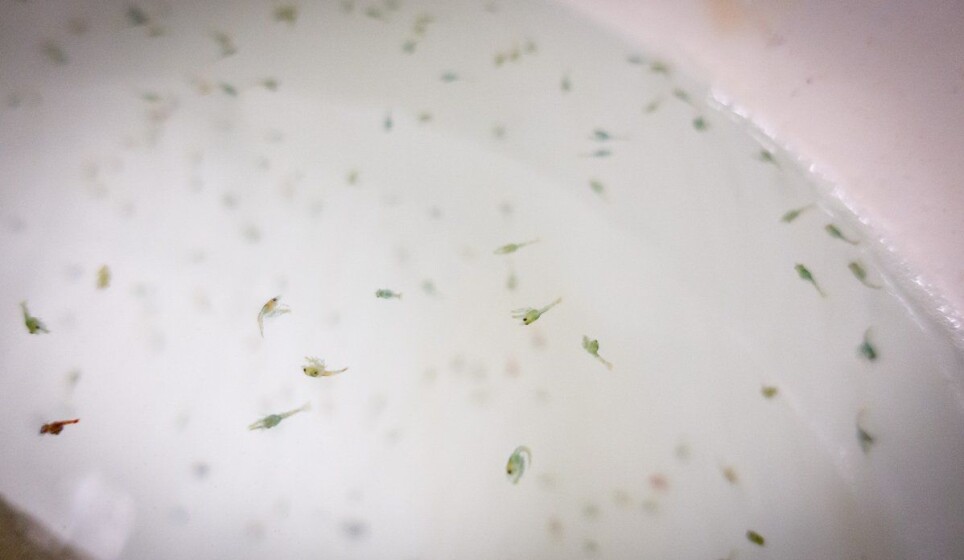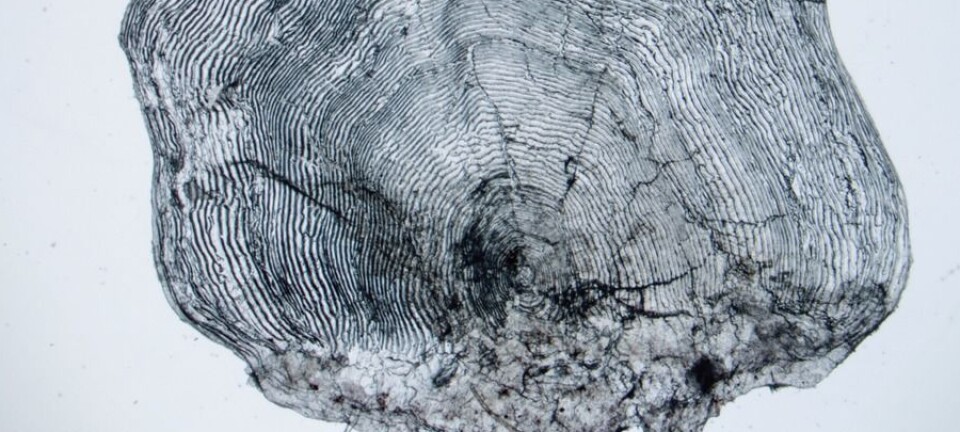This article is produced and financed by the Institute of Marine Research - read more

New lab experiments show anti-sea lice agent is highly toxic to lobster larvae
When researchers simulated anti-sea lice treatments, the plume of chemicals that can be dangerous to the larvae typically spread out 5 to 15 kilometres as it diluted.
(The agents studied here is currently not widely used in Norway, but in theory its use could increase; see fact box.)
The findings have been presented in a new scientific article based on a two-part study. The marine scientists started by documenting how toxic the anti-sea lice pesticides azamethiphos and deltamethrin are to lobster larvae in laboratory experiments.
Afterwards, they used advanced data simulations to estimate the maximum spread of these bath treatments (see fact box) around fish farms that had used them in 2017 and 2018.
Both chemicals were acutely toxic in low doses
“The delousing agents azamethiphos and deltamethrin are acutely toxic to lobster larvae even in small concentrations,” says marine scientist Aoife Parsons.
The results for deltamethrin were particularly striking, with the deadly dose after an hour’s exposure being 800 times weaker than the concentration that salmon are bathed in.
The researchers consider one hour to be a short period of exposure.
“The effective dose, that is the dose that paralyses the larvae in practical terms leading to their deaths, is 4,000 times weaker than the dose used to treat salmon,” says Parsons.
What does that mean in practice? This is where the simulations come in.

Simulated emissions from 23 real fish farms
New methods and increasingly powerful computers are enabling researchers to run advanced models to simulate the spread of chemicals. These kinds of tools are also used to simulate the spread of salmon lice along the coast. Similar tools are used in weather forecasting.
“The chemicals mix with the sea water. Eventually they become so diluted that they are barely perceptible. We wanted to find out when and at what distance from the emission source that takes place,” explains Pål Næverlid Sævik, a mathematician at the IMR.
The researchers selected 23 fish farms that have used one of the two agents in the past. Then they simulated the spread of a treatment dose at four different times each day.
“That allows us to pick up variations in currents and tidal conditions,” says Sævik.
Maps were generated of all of the emissions scenarios – 28 simulations per farm, or almost 800 in total.
Spread of the bath agents varied
Azamethiphos only spreads a relatively small distance around the farms. In the simulations, a plume of the dose that is dangerous to lobster larvae could drift up to 5 kilometres, but it rarely travelled more than 1 kilometre.
“Deltamethrin is worse. Dangerous doses typically drifted between 5 and 15 kilometres. In rare cases, the anti-sea lice agent could travel 20-30 kilometres before it was sufficiently diluted to pose no risk to lobster larvae,” says Sævik.
There was a great deal of variation from one farm to another. Geographic location and variations in currents and environmental conditions were the key factors.
Lobster larvae drift with the current
In their earliest larval stages, lobsters drift freely with the current. What is the risk of them ever encountering an anti-sea lice agent?
“10 kilometres away from an emission source, for example, a lobster larva would really need to be in the wrong place at the wrong time to be hit. It’s unlikely, but not impossible.
The closer you get to the source, the greater the risk,” explains Sævik, who is now trying to develop methods to quantify this risk.
“But again it depends on local conditions. In the worst areas, the risk of being hit may be 20-30 percent, even at a distance of 10 kilometres.
The time of year is not a factor in the models – but the lobster larvae mainly float around in the sea in springtime.
“So the article doesn’t say that anti-sea lice agents and lobster larvae necessarily overlap, but rather that there are quite large areas where the larvae could be hit by the agents, and that deltamethrin, in particular, is highly toxic to lobster larvae.”
Dilution is the key
Today there are rules on the use of bath agents and distances to vulnerable areas, such as known shrimp fishing grounds. The researchers have drawn some new conclusions from their study.
“Our simulations show that time is much more important than distance for the dilution of the bath agents. For a well-boat, this means releasing the chemicals gradually while the boat is moving. In a salmon cage it’s hard to release the water used for the bath treatment gradually, but if it were technically possible it would be a great advantage”, says Sævik.
This new study on deltamethrin and azamethiphos is part of the Institute of Marine Research’s effort to understand the impact of anti-sea lice pesticides on wildlife species outside the fish farms. Also see our risk assessment for Norwegian aquaculture (in Norwegian).
Reference:
Aoife E.Parsons et.al.: The impact of anti-sea lice pesticides, azamethiphos and deltamethrin, on European lobster (Homarus gammarus) larvae in the Norwegian marine environment, Environmental Pollution, 2020. Doi.org/10.1016/j.envpol.2020.114725


































